Ready to learn more?
Get all the details straight to your inbox!

Luther students can register in Arts, Science, or Media, Art, and Performance. Luther students are U of R students and receive a U of R degree.

Luther College students are eligible for nearly $100,000 in academic awards – in addition to scholarships and bursaries awarded by the U of R.

To enrol as a Luther College student, simply fill out the University of Regina application form and select Luther as your campus of choice.
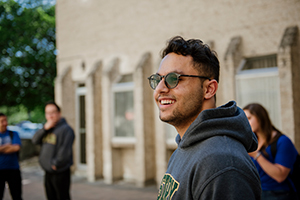
Every degree program at Luther College offers a study abroad option and an optional experiential learning component where you gain real world experience and get paid while going to school!
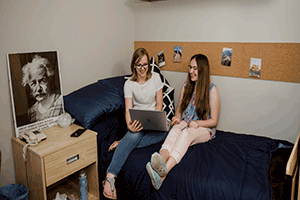
Our student residence, The Student Village at Luther College, welcomes residents from ALL post-secondary institutions in Regina. Rooms come with a meal plan, free laundry, free wi-fi, and a great sense of community.
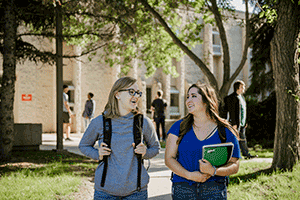
Luther College is a great choice for high school to university transition. Enjoy all the benefits of a larger campus, without feeling lost in the crowd. Our community is full of caring mentors and peers to ensure a positive student experience.
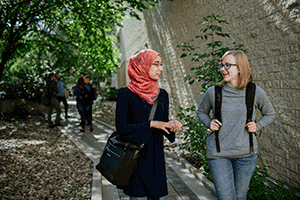
You can book a tour of Luther College, the U of R campus, and our student residence, The Student Village at Luther College, any time throughout the year. Contact our Recruitment Office at 1-306-206-2117.
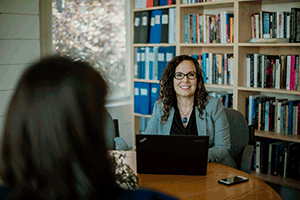
Free enrolment counselling support and invaluable one-on-one academic advising are available for all programs at Luther College.
Get all the details straight to your inbox!
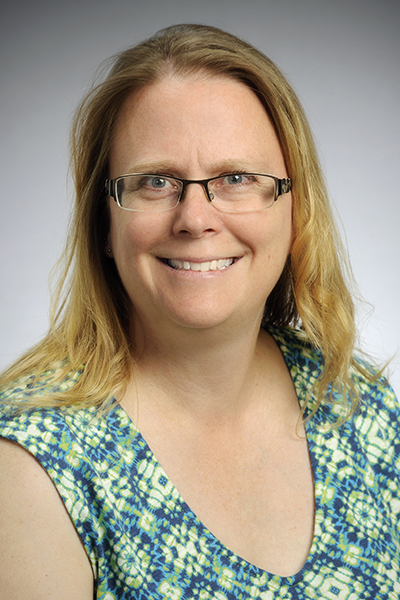 A “Story from the Podium”
A “Story from the Podium”By Laura Ambrose (Biology)
Tell Me.
“I have a problem with the midterm on Thursday.”
“Tell me.”
“I am taking the Citizenship Exam with my family.”
”Congratulations! How does Friday work for you?”
“I am sorry I missed the exam. I have this report from the police.”
“Tell me.”
“My son has been in some trouble.”
“I am sorry to hear that. How is Monday?”
“I have something to tell you.”
“Tell me.”
“I am transferring to the Faculty of Science, in Biology, because your class made me see how much I like biology and that I am pretty good at it.”
“I am so happy that you have found a discipline to study that excites you! And, of course, that it is biology!”
Each semester the Luther Auditorium fills with students ready to begin a new semester of learning. After sixteen years of teaching, I have learned to take some time to parse out the demographics of the classroom. I have also learned that to ignore the results of the demographic study (in the form of a survey) is unwise.
At the base of the demographic chart is the diversity of university experience. Students in their first semester need different information than students in their last semester. I need to reach these first year students while not boring the brain cells out of the more experienced students. I have tips that I provide to students throughout the semester, delivered at specific intervals, to help them learn to be university students. Who knows, the tips might just help a third year student as well!
“I did not do very well on that exam. I thought I studied a lot.”
“Tell me how you studied.”
“I read over my notes a few times. Just like I did in high school.”
“I see how you thought would be enough. But, often, in university classes, we are looking for more of the details as well as the bigger picture understanding. That means when you answer a question, you need to include the details that support your answer. You need to employ active study techniques like writing, drawing, and speaking. And interpretive dance if you wish. ;-)”
The next level in the demographic chart is the diversity of disciplines. After I realized the multitude of degree programs represented in my classroom, I better understood the results I was seeing on the exams and assignments, as well as the stumbling blocks in the content. I embarked on a journey of professional development to design and implement assessments for the students that were in my classes, rather than the students I imagined were in my classes.
“I think my assignment does not look like the other students’ assignments.”
“Show me.”
The student hands over a black piece of paper depicting a beautiful boreal forest food web.
“Ah, you are right. It is not like other assignments. But it meets all the criteria, and it is beautiful.”
“I had an idea for the assignment on the bacteria. I am not sure if you are going to accept it. It is not really following the assignment directions. But you did say if we had an idea to come talk to you. So …”
“Tell me.”
“I want to make and produce a video as if this was a documentary about the bacteria. I will do all the work myself. I have written the script so it covers all the content of the assignment. I have costumes and characters to represent the references, you know, like the citations. I have props and supporting characters, like my dog and my guinea pig. So, um, yeah …”
“Well, I absolutely cannot wait to see it. Your excitement has me excited!”
The next level in the demographic chart is the diversity of life experiences. This diversity becomes evident through conversations and in emails. It sometimes remains frustratingly hidden until a crisis arises. I have learned over the years to not ignore the fact that the students in my classes are not necessarily marching through their degree from start to finish. I have also learned that is impossible to tell by looking at a student what their life story might be, because appearances are most likely deceiving.
“When I was in high school, we did not have many textbooks.”
“Where did you go to school?”
“In the refugee camp. I got there when I was 3 and moved to Canada this year. Our teachers were volunteers from all over the world. I had a very good biology teacher from England. He was like you, very excited about biology.”
“Ah. I am glad you had a good biology teacher there. Sometimes us biology teachers get pretty carried away with how excited we are about biology. Even the boring stuff like DNA. I am happy you are here now. Welcome to Canada.”
The next level in the demographic chart is the diversity of learning styles and abilities. Wow – very quickly, 16 years ago, I learned that not all students learn like science students learn. In fact, probably very few students learn like science students learn. Thank goodness for my colleagues at Luther College, and thank you to my colleagues at Luther College, for sharing with me the types of assessments that non-science students excel at and how to provide opportunities for non-science students to demonstrate their knowledge. I now have such a great library of assessments. Within this level of the demographic chart are the accommodations from the Centre for Student Accessibility. It seems that each year brings a new challenge, and with it, a new way of teaching or assessing. There is nothing like facing a challenge and overcoming it to become a better instructor, and to remember that the biggest challenge is what the student is facing, not what we have to do to meet the accommodation.
“I get double the time to write the final. But I am not sure if it is enough time.”
“Tell me.”
“I usually read each word of the exam many times. I read each question until it says the same thing twice. Sometimes my brain will pull words from the bottom of the page to the top and sometimes it will delete words out of the question. It takes a long time and it is exhausting.”
“Yes, I can see that. Would it help if I read the question to you out loud from my own copy of the exam, and you could track each word?”
(This was before there was such a thing as a reader or a scribe accommodation.)
Students do not fit into just one of the levels of the demographic chart. They occupy space on multiple levels and the challenges they might experience arise in unexpected ways at unexpected times. Sometimes these challenges are easily solved with a bit of extra time for an assignment. Sometimes they require more intervention from professional services. Sometimes, the student must just take time away and come back later.
“I am having trouble with the unit we are studying right now.”
“Tell me.”
“My mother passed away a few years ago from breast cancer.”
“I am sorry. My father also passed away from cancer. It is hard to learn about and teach this topic. Do you have someone to talk to?”
A student is walking back and forth in front of my office door… for a long time. Finally, the student stops and looks in:
“Tell me.”
“You know that motorcycle accident? The one where the guy died. That was my best friend in high school. I can’t believe it. I can’t believe it. All the people from school are hanging out together in Saskatoon.”
“Let me tell you something I have learned. You know, because I am old now. I have learned that there are moments in life that you need to take part in because they will never happen again. You need to be there and be present. This is one of those times. There is a lot of loss in your life right now and you need to be there, in Saskatoon, where the loving and the grieving are happening. This exam, this assignment, they will be here when you get back. Whenever that is.”
Sometimes, the best times are when the students become the teacher to the people in their lives. The goal of the out-of-discipline class is to give students another way of looking at the world. The students get foundation knowledge they can take with them as they move on from my class into the rest of their degree and beyond.
“Did you see that photo going around Facebook? The one with the twins? One twin has red hair and pale skin, while the other twin has black hair and brown skin?”
“Yes. Tell me what you think is happening there.”
“I think I see how that happens, now that we have studied genetics. I told my brother, and he told his teacher. I told them it is totally possible. I wrote out that example you gave us in class. It helped them understand.”
“Ah, now you are the teacher.”